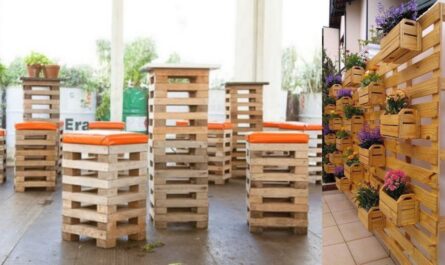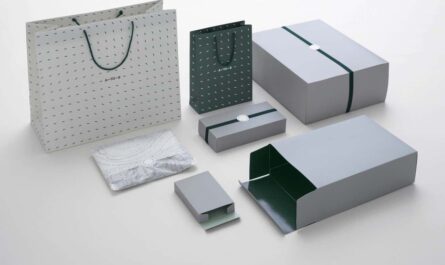Emergence of Digital Printing Technologies
Digital printing technologies have transformed the packaging printing in recent years. Technologies like inkjet, electrophotography, and electrography enable printing directly onto various substrates like paper, plastic, metal, and fabric. This allows for short-run, on-demand printing with no minimum order quantities or setup fees. Packaging printers can now offer full-color, photorealistic prints in quantities as low as one without incurring high costs. Digital printing is also more responsive to demands and consumer preferences compared to traditional printing methods. Products can have customized packaging printed just in time for an event or promotion. Variable data printing further allows personalization at scale. The adoption of digital technologies has given rise to agile and efficient packaging decoration suited for today’s fast-paced.
Sustainability Becoming a Priority
Environmental sustainability is a major concern in the Packaging Printing consumer awareness and regulatory pressures are driving packaging printers to adopt greener practices. Traditionally, print runs involved significant unused materials like substrates, inks, coatings, and chemicals that ended up in landfills. Digital printing minimizes such waste by enabling on-demand runs. It also allows for optimized substrate cutting with little trim loss. Ink developers are formulating new bio-based and plant-derived inks that reduce reliance on petrochemicals. Some inks can decompose without harming the environment. Meanwhile, substrate manufacturers have improved recyclability and developed renewable alternatives to plastic and paper. Packaging designs now emphasize minimal material usage and repulpability or reusability. Life cycle assessments further help quantify environmental impacts and improve processes. Led by stricter policies, sustainability will remain a top priority for the packaging printing in coming years.
Hybrid Printing Solutions Emerging
Packaging printers are combining digital and traditional printing methods to achieve hybrid solutions optimized for various applications and budgets. For instance, for products with mass-market distribution needs, flexography or rotogravure provide the throughput and costs at scale, while digital enhancement adds personalization or versioning. Short-run jobs or prototypes increasingly use digital printing supplemented with spot or process colors via offset or flexo for impact. Hybrid UV inkjet presses integrate inkjet and UV curing to print on corrugated cardboard and folding cartons more efficiently. Such hybrid “clicks and mortar” approaches provide the best of both worlds – the flexibility, versioning capabilities and short-runs of digital combined with the higher speeds and lower costs per unit of traditional presses for high volumes. By leveraging each technology’s strengths, packaging printers enable more consistent branding across skus and quantities.
Advancements in Substrate Decoration
Both digital and traditional Packaging Printing technologies continue enhancing substrate decoration capabilities. Inkjet printing now supports a diverse range of media beyond conventional paper stocks. It can print on plastics, metals, glass, fabrics, and 3D surfaces like containers, bottles, and rigid boxes. Specialized inks for these have surfactants, polymers and other additives to ensure adhesion and durability. Meanwhile, material scientists develop functional barrier papers, recyclable plastic films and aluminum foils suitable for flexible and folding carton applications. Techniques like lamination, foiling, and specialty coatings impart tactile, visual richness while shielding contents. Holographic films add extra brand protection and viewer experience. Printing technologies support multi-level decoration in single passes. Together, these advancements in ink and substrate chemistry expand flexible packaging options to meet evolving consumer demands. Packaging becomes an important extension of brand messaging and product communication at point-of-sale and consumption.
Growth of Custom Package Printing Services
Rise of one-off products, subscription services and personalized consumer goods have fostered the custom package printing industry. Companies offer a range of made-to-order and small-batch solutions tailored for diverse business models. Popular services include product packs carrying company logos and designs, gift boxes and bags for special occasions, and loyalty packaging rewards. Digital print providers partner with substrate converters, die-cutters and full-service packagers to handle multi-step production. They can quickly iterate prototypes and print short runs to match delivery deadlines. On-demand services remove overproduction risks. Meanwhile, SaaS-based platforms let brands upload artwork and order customized packages without commitments. Automated workflows ensure production consistency. As personalization becomes a key sales differentiator, custom package printing empowers businesses to engage customers through memorable unboxing experiences while maintaining flexible minimums. Technology advancements will grow this customization potential further.
3D Printing and Augmented Technologies
Emerging areas like 3D printing, virtual reality and augmented reality are transforming how packaging is designed, produced and experienced. 3D food printers can customize snacks, meals and confectionery packs based on individual nutrition profiles and tastes. 3D modellers co-create packaging shape and structures with customers. Virtual reality helps visualize complex corrugated boxes and folding cartons digitally before production. Augmented reality brings interactive brand storytelling and unwrapping simulations to life through mobile apps. Some surfaces like corrugated backing boards now use printed QR and barcode patterns recognizable by AI-driven smart devices and AR browsers. Brands enrich experiences by layering digital content onto physical packaging. Companies offering those interactive printing solutions aim to make packaging a holistic storytelling and engagement channel. Adoption depends on affordability, but such innovations suggest an exciting future where packages become dynamic communication touch points.
Packaging printing is evolving at a rapid pace through digitalization, hybrid methods, new materials and emerging augmentations. Companies will continue leveraging diverse capabilities and forge new partnerships to unlock greater customization, sustainability and experiences. Both technology and consumer needs will reshape this dynamic industry in the years ahead.




